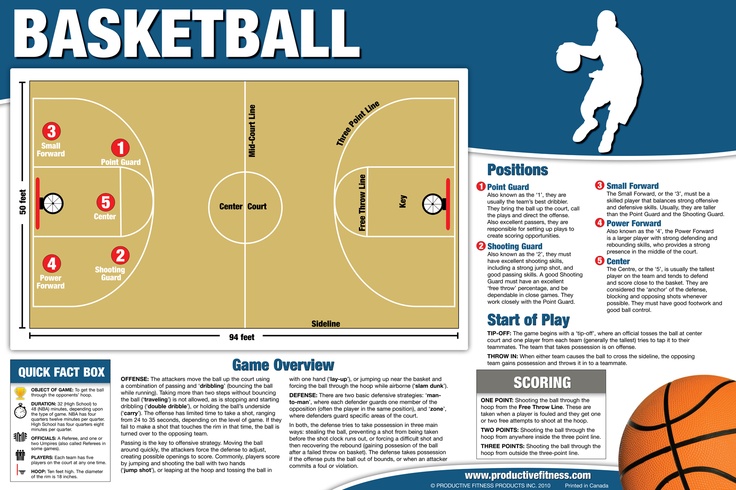Home »
Misc »
How does aau basketball work
How does aau basketball work
What is AAU Basketball? (Including Pros and Cons)
AAU basketball is a highly debated topic.
Exactly what is AAU basketball and whether kids should participate is a question I receive often from parents.
With all the scandals that have surfaced involving college coaches, AAU coaches, runners, agents, advisors, shoe company executives, and the players and the families themselves, there are a lot of questions that need to be answered.
In this blog post I'll do my best to describe what is AAU basketball, who can participate, when the season is, and also the pros and cons of playing.
Let's start off with the basics...
Table of Contents
What does AAU Stand For?
What is AAU Basketball?
Who Can Play AAU Basketball?
When is the AAU Basketball Season?
A Brief History of AAU Basketball (and where it went wrong)
Public Criticism of AAU Basketball
Positives of AAU Basketball
Negatives of AAU Basketball
Well, Should My Child Play AAU Basketball?
Conclusion
What Does AAU Stand For?
AAU stands for Amateur Athletic Union, and according to their website, they have been in existence since 1888.![]()
What is AAU Basketball?
The Amateur Athletic Union is a youth sports organization.
To put it simply - groups of players get together and form independent teams that compete in AAU tournaments against other teams.
Since it was first created, the goal of AAU has been to advance the development of youth sports and physical fitness programs.
Originally, the focus of AAU was on the development of Olympic athletes with only the best of the best players competing...
But since 1970, it has deviated to the growth of youth sports at the fundamental level.
It is stated clearly in their vision statement: "To offer amateur athletes and volunteers opportunities to develop to their highest level through a national and local network of sporting events."
Who Can Play AAU Basketball?
AAU Basketball is an option for boys and girls.
For boys, they can start playing in the 7 and under age group and can compete up until the 12th grade or 19 and under division.
For girls, they can start playing when they are in the 2nd grade and can compete up until the 12th grade or 19 and under division.
When is the AAU Basketball Season?
The main stretch of AAU basketball runs from February until July; immediately following the end of the high school basketball season.
Although there are still many tournaments played throughout the entire year (including during the high school season).
Every age group is offered the opportunity to qualify and compete in the national championship tournaments.
These tournaments are what help AAU stand out from the rest of the grassroots basketball scene.
A Brief History of AAU Basketball (and where it went wrong)
AAU basketball gained popularity in the 1980s when Sonny Vaccaro and Phil Knight came together with the goal of spreading the youth basketball movement.
By signing AAU coaches and college coaches to shoe contracts, they ensured specific AAU programs and major basketball programs would be wearing their shoes.
Eventually, it became less about the basketball and more about the big shoe companies competing over the best players in the country.
AAU basketball clubs focused on receiving sponsorships from big shoe companies, like Nike and Adidas, with the goal of attracting elite high school talent.
The hope was that by getting these players to compete for a Nike or Adidas sponsored AAU team, they would stick with the company who sponsored their AAU team when it came time for them to sign a shoe contract.
This lead to less focus by the coaches on the development of the players during the summer basketball months and more attention on shoe contracts, rankings, and the marketing brand image of the players and clubs.
A lot of talented youth players got swept up in this corruption.
Some were overhyped as youths and never panned out, others lost eligibility to play in high school or college because of dealings with advisors who provided the player and his family with large sums of money.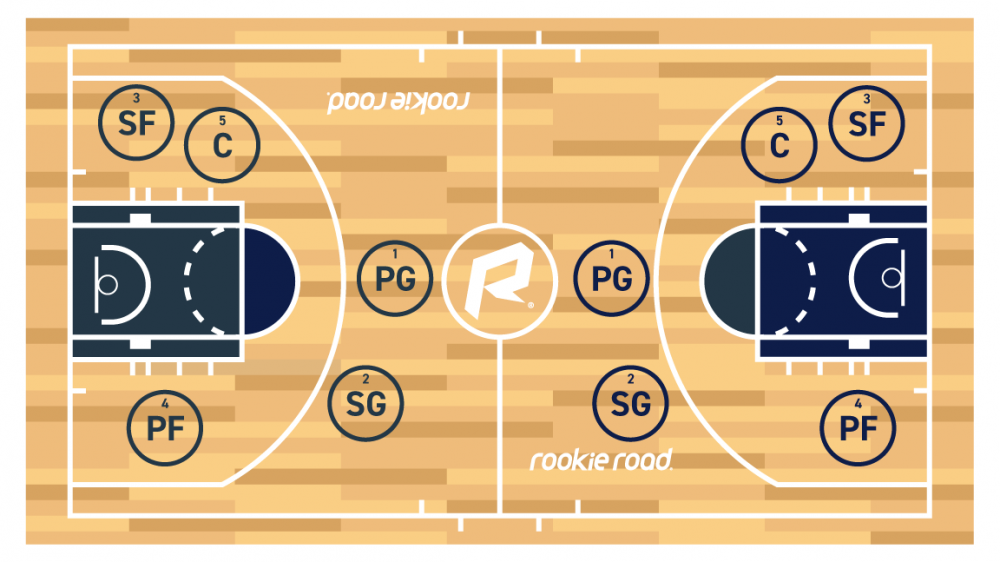
Other players like Kobe Bryant and LeBron James dealt with the early success as teenagers and catapulted it into legendary basketball careers without allowing the scandalous tendencies of summer basketball to impeded their progress.
While AAU basketball programs aren't the only clubs affected by the major shoe companies, the organization has taken the brunt of the blame for the inconsistencies that are a part of the high school and college basketball landscape.
Public Criticism of AAU Basketball
There have been several high-profile coaches and players voice their dislike for AAU basketball.
Here's are some examples:
Steve Kerr:
“Even if today’s players are incredibly gifted, they grow up in a basketball environment that can only be called counterproductive. AAU basketball has replaced high school ball as the dominant form of development in the teen years. I coached my son’s AAU team for three years; it’s a genuinely weird subculture. Like everywhere else, you have good coaches and bad coaches, or strong programs and weak ones, but what troubled me was how much winning is devalued in the AAU structure. Teams play game after game after game, sometimes winning or losing four times in one day. Very rarely do teams ever hold a practice. Some programs fly in top players from out of state for a single weekend to join their team. Certain players play for one team in the morning and another one in the afternoon. If mom and dad aren’t happy with their son’s playing time, they switch club teams and stick him on a different one the following week. The process of growing as a team basketball player — learning how to become part of a whole, how to fit into something bigger than oneself — becomes completely lost within the AAU fabric.”
Teams play game after game after game, sometimes winning or losing four times in one day. Very rarely do teams ever hold a practice. Some programs fly in top players from out of state for a single weekend to join their team. Certain players play for one team in the morning and another one in the afternoon. If mom and dad aren’t happy with their son’s playing time, they switch club teams and stick him on a different one the following week. The process of growing as a team basketball player — learning how to become part of a whole, how to fit into something bigger than oneself — becomes completely lost within the AAU fabric.”
Kobe Bryant:
"AAU basketball. Horrible, It’s stupid. It doesn’t teach our kids how to play the game at all so you wind up having players that are big and they bring it up and they do all this fancy crap and they don’t know how to post. They don’t know the fundamentals of the game. It’s stupid.”
Gregg Popovich:
“Ever since AAU became the de facto leader in 'preparing kids', it’s been all downhill.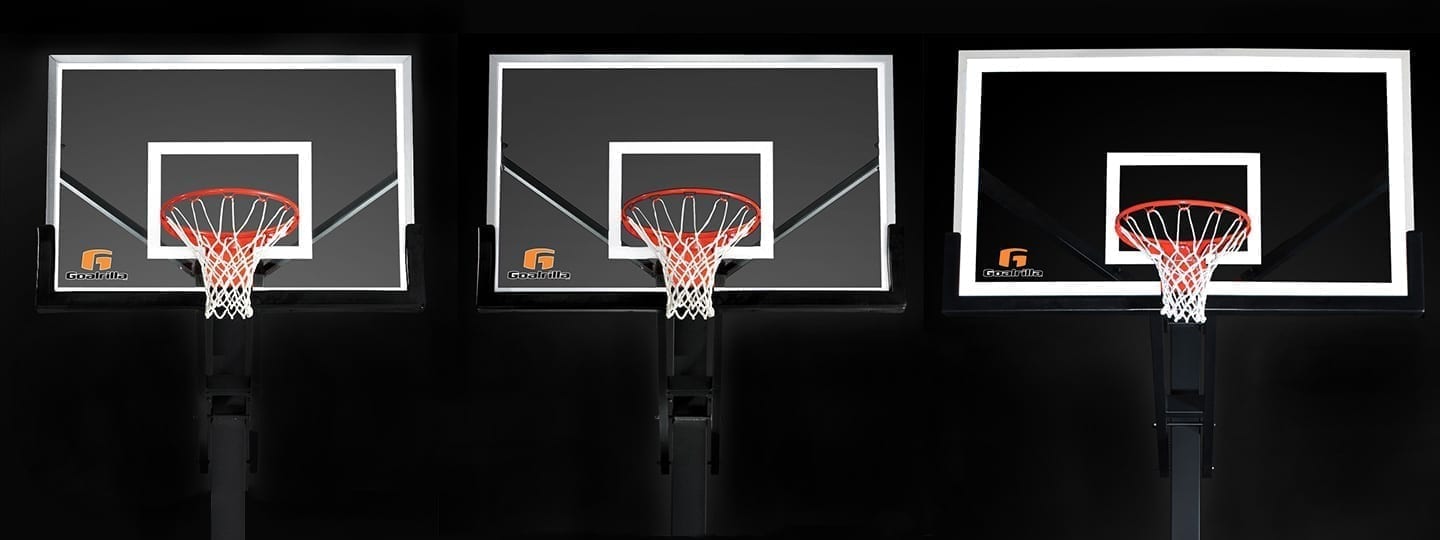 ”
”
Charles Barkley:
“This new generation, they all stick together, they all play together, they’re all AAU babies,” Barkley said Wednesday on “Mike & Mike”, as transcribed by USA Today. “Any type of criticism directed toward them, they consider it hate. Even if it’s a fair criticism, they consider it hate. So no, it does not bother me what the new generation thinks, to be honest with you. I know they all stick together, so that’s just part of it, too.”
Moving on - here are the main positives and negatives of AAU basketball in my opinion...
Positives of AAU Basketball
Despite all the criticism AAU has received, there are two main benefits...
1.
Compete against the best competitionIn order to reach your potential as a basketball player, you need to be competing against the best teams and players.
AAU basketball helps achieve this.
It gives players the opportunity to play against better competition they couldn't find if they decided to stay at home and play in local leagues.
Being able to compete against top-level talent forces payers to raise their game and also exposes their weaknesses and shows players what they need to work on.
2.
Opportunities for kids to get scholarshipsFor players with elite level talent, playing AAU basketball to get scholarship opportunities isn't exactly necessary...
But there have been many relatively unknown players who have been discovered at AAU tournaments and then offered a scholarship.
The truth is...
AAU basketball provides players with a great chance to showcase their skills against elite competiton in front of hundreds of coaches.
For players who don't have college coaches flying to their home town from all over the country to see their elite skills, this can be a big opportunity to miss out on.
Negatives of AAU Basketball
There are more than two negatives, but these are the two most important...
(These are true far more often than not... but there are definitely exceptions which I'll talk about later in the article. )
)
1.
Winning is much more important than developmentOne of the things I find most troubling is that many coaches are neglecting teaching the basic principles of fundamental basketball.
In fact, there are some teams who don't run practices at all.
One of the reasons for this is because an AAU team will attempt to recruit the best talent possible, even if the players live far away from each other.
While families are more than happy to make the trip for a tournament, setting up team practices is incredibly difficult.
And when they do get together, with 3 - 4 games a day during tournaments, there is little time for coaches to work on skills with their team.
To add to this point, coaches will see very little apart from full court presses and zone defense during tournaments.
Both of these harm youth development but definitely lead to winning more basketball games.
2.
Poor coachingAAU basketball is littered with poor coaching.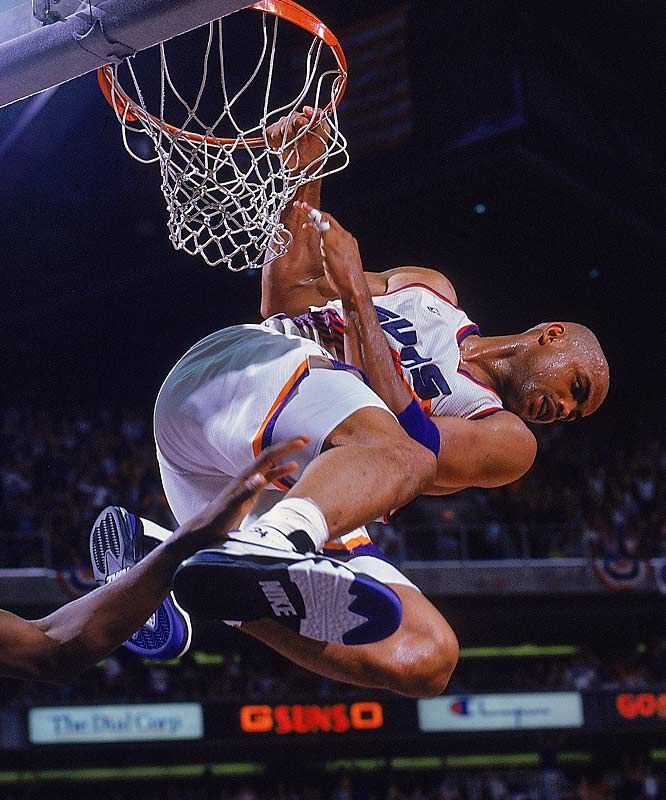
Much of this has to do with the fact that anyone can start an AAU team and appoint themselves the head coach.
There are no certifications coaches need or criteria to be met as long as they can recruit a team who are willing to pay for the team to participate.
During many AAU tournaments, you'll be forced to witness coaches screaming obscenities at their players instead of teaching them the game.
I have no problem with coaches being tough on their players and holding them accountable, but it appears some coaches will yell with little purpose to make their players better.
In fact, most of the time it seems like they're only yelling to draw attention to themselves.
Well, Should My Child Play AAU Basketball?
This is the question everyone wants answered.
Here's my opinion:
Despite all the negatives that come with AAU basketball, there are definitely players who can benefit from participating.
BUT...
You must find the right team.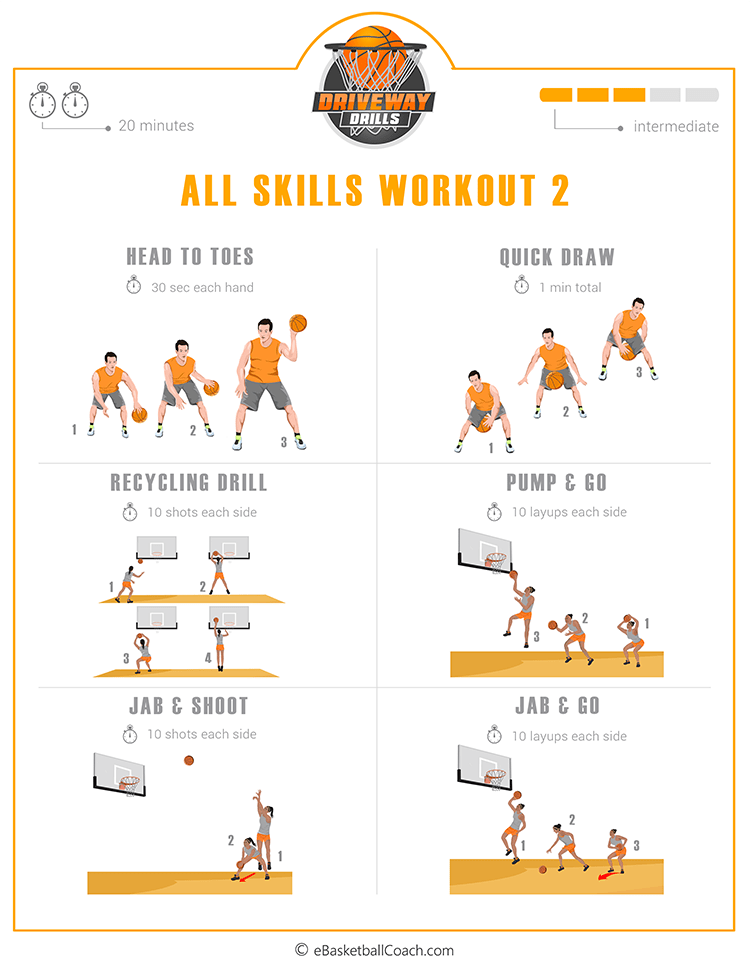
If you can find the right program, AAU basketball can be a great development opportunity and a rewarding experience.
If you end up in a poor program, AAU basketball will be a horrible experience in many different ways.
Here are a few things to look out for when selecting an AAU team:
Good Coaching - You want to find a coach who understands the game, has good relationships with all players, and is focused on teaching them how to play basketball the right way.
Team Basketball - Make sure you find a team that promotes and plays team basketball. This will often depend on the basketball philosophy of the adult who is coaching the team.
Parents and Players - Will you and your child enjoy playing and hanging around with the players and parents on the team?
Games vs Practices - You must select an AAU team that has scheduled team practices at least once a week (preferably two). Don't join a team who only gets together on tournament weekends.
Conclusion
Exactly what is AAU basketball and deciding whether your child should participate is difficult to work out...
On one hand, there are many horrible parents and coaches who make a mockery of the sport, too much involvement from shoe companies, and not enough importance on developing good people...
But on the other hand, players can compete against the best of the best and have a bigger opportunity to get noticed by a coach who may offer them a scholarship in the future.
Whether you will have a good or bad experience will come down to selecting the right AAU club.
At the end of the day, the USA is still clearly developing the best basketball players on the planet...
And many of these players grow up participating in AAU.
While there are many negatives, the opinion that AAU basketball is killing the development of basketball players is a bit over the top.
What is AAU Basketball?
What is AAU basketball? It is a question that a lot of people think they understand but often don’t fully grasp.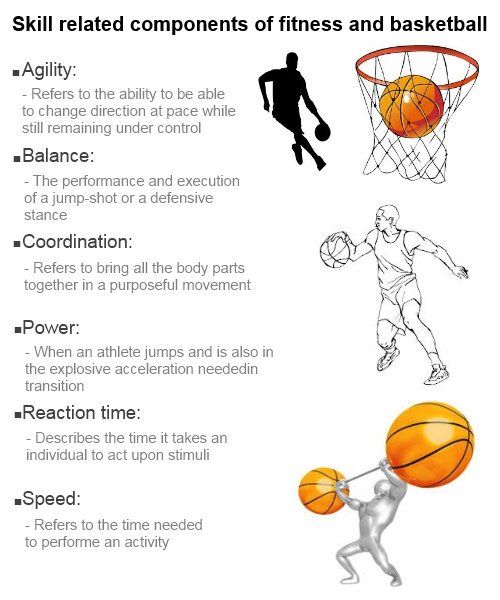
When you are done reading this article you will understand:
- What AAU Basketball is
- The different terms for AAU basketball
- When you can and should start playing
- The differences between AAU and school ball
- Why some players participate in more intense team ball while others do not
When people ask what AAU basketball is, they are usually looking for a team to play on. Or they are seeking a way to get additional instruction for their kids. This post is intended to shed light on joining a team.
Individual development, though it will always factor into team stuff, is not addressed here.
Specifically, what is AAU basketball?
AAU basketball comes with a lot of different names. Officially it stands for the Amateur Athletic Union. It can also be referred to as club basketball or travel basketball. Generally, it refers to non-school teams that are competing.
When
can should players start playing AAU?
Leagues and teams are available as early as kindergarten.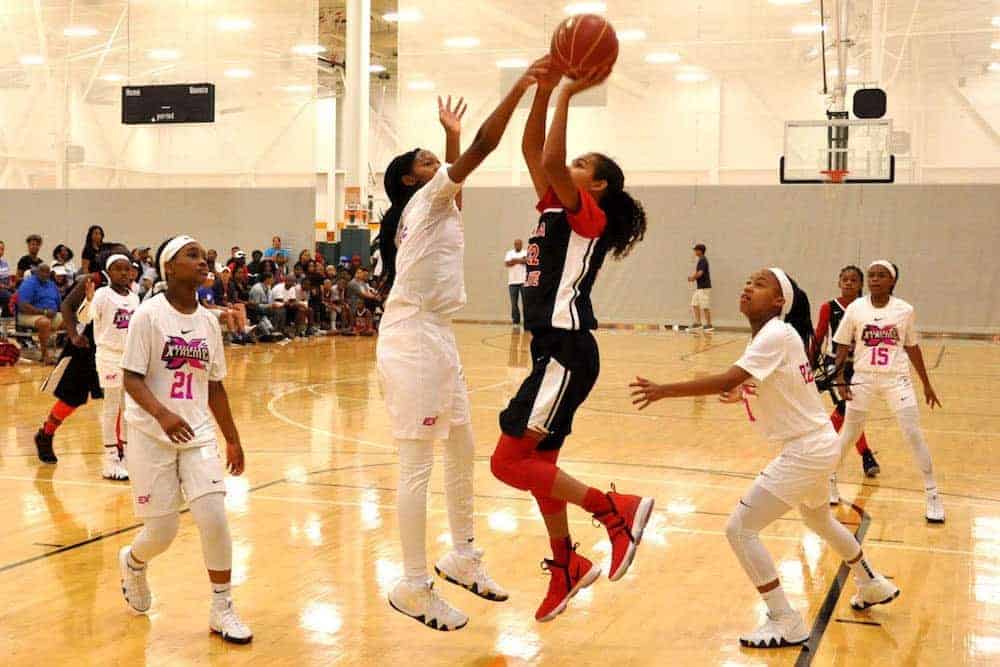 When you consider youth leagues, the YMCA, Boys & Girls Clubs, and other organizations, there will usually be opportunities to play. Click here to read about the debate between club and school ball.
When you consider youth leagues, the YMCA, Boys & Girls Clubs, and other organizations, there will usually be opportunities to play. Click here to read about the debate between club and school ball.
While the first question is usually when can a player start playing with a team the more important question is when should a player start playing with a team? They should also ask what type of team should they play on. The age and type of team depend on the player’s goals, aspirations, and where they are in their playing career.
Here is what we suggest as a guideline.
The “Why, How, What” Spectrum
Opportunities come at all different levels. An easy way to gauge where a player is at is by looking at why they are playing, how their abilities are progressing and what type of competition level they are ready for. This is just an estimation and not an exact science.
Why are they playing?
We list this one first because it is the most important. The most successful players play because they love the game. That love keeps them motivated through tough times. Their love for the game is established because when they started playing they had fun. Over time that love may turn from fun to work.
The most successful players play because they love the game. That love keeps them motivated through tough times. Their love for the game is established because when they started playing they had fun. Over time that love may turn from fun to work.
In the beginning, basketball should be about having fun and developing a love for the game. As the player develops that fun will evolve into a love for working hard and developing as a player.
How are their abilities?
This is where you start looking at things like skill level and athletic ability. Some of this will naturally get better over time as the player grows and matures. Skills and basketball knowledge will only develop through hard work and practice.
Players should start by learning the fundamentals so that there is a solid foundation to build on. When the fundamentals are established and understood, more advanced skills and concepts can be taught and learned.
What level are they competing at?
Basketball is a team sport so players will need to play on a team at some point.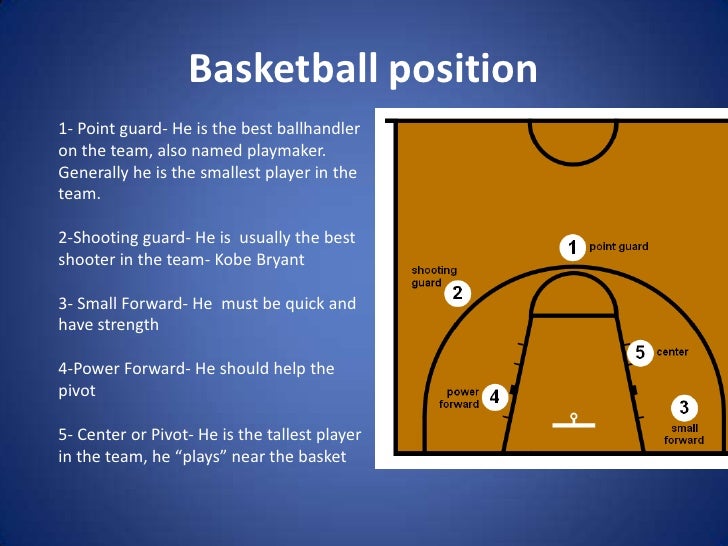 This means competition will now be a factor.
This means competition will now be a factor.
In the beginning, we suggest almost no competition until fundamental skills are taught and understood. If competition is introduced too early then players lose focus on developing fundamentals and it may affect the level of fun they are having.
However, when skills are learned and the player is having fun, competition is a good thing. It puts those skills into action and can give players a sense of accomplishment.
As players mature and get older, the level of competition will continue to rise. At the highest level, the competition is against the most elite players in the world.
Compare the player to the team
Ideally, a player will be on a team that is at a similar place on the spectrum. The hardest area to evaluate may be the competition level. Often, the way a team is formed or the league/ tournament they play in will help you gauge the level. Again, this is not an exact science but here are three things to consider:
- The rules of the league or tournament.
 At the lowest competition level the rules may include: every player must play equal time, no score keeping and wins/losses are not counted. This is perfect for young players that need to work on the basics. At high levels of competition wins and losses are not only kept track of but they also have a bearing on postseason play and whether or not the coach gets fired.
At the lowest competition level the rules may include: every player must play equal time, no score keeping and wins/losses are not counted. This is perfect for young players that need to work on the basics. At high levels of competition wins and losses are not only kept track of but they also have a bearing on postseason play and whether or not the coach gets fired. - The way teams are selected. Are players assigned to a roster by a league director? Is there a tryout to make a team (or top team) or does everyone make a team? Are coaches out recruiting players based on skill? Are players being paid to compete?
- The teams you will compete against. Are they the same age or are you “playing up”? Are the players all from the same area or are they from everywhere?
To improve, the competition level should only be at or slightly higher than the team’s level. This will challenge the players, take them slightly out of their comfort zone, and create opportunities to improve without destroying their confidence. Confidence is huge for younger players.
Confidence is huge for younger players.
Now what?
At this point, you have a better idea of what AAU basketball is. But why should players play AAU? Or is playing AAU at an early age a bad idea?
Click here to read our article “Why Play For an AAU Team?
Subscribe to Our Newsletter
Looking for information on tryouts, tournaments, or events?
By joining our email list, you will receive all updates on upcoming Select events and opportunities as they are announced including some coming up shortly!
First Name
Email Address
Rules of Basketball
How the rules have changed in your favorite game
How the rules have changed in your favorite game
WE ALL LOVE TO PLAY BASKETBALL, BUT DO YOU KNOW THE RULES EXACTLY?
Basketball was invented by James Naismith in 1891. Then everything was different: playgrounds, baskets, balls…
!!! Read about the evolution of balls in the article:
Basketball was invented by James Naismith in 1891. Then everything was different: playgrounds, baskets, balls…
Then everything was different: playgrounds, baskets, balls…
!!! Read about the evolution of balls in the article:
The history of basketballs
The history of basketballs
What balls are played now and how it happened
The beginning
The rules have also changed a lot during this time. Initially, there were only 13 of them in basketball:
- The ball can be thrown in any direction with one or two hands.
- The ball may be hit with one or both hands in any direction, but never with the fist.
- The player cannot run with the ball. The player must throw the ball from the point at which he caught it, except for a player running at high speed.
- The ball must be held with the hands. You can not use the forearms and body to hold the ball.
- In any case, hitting, grabbing, holding and pushing the opponent is not allowed. The first violation of this rule by any player shall be called a foul; the second foul disqualifies him until the next ball is scored, and if there was an obvious intention to injure the player, then a disqualification for the entire game.
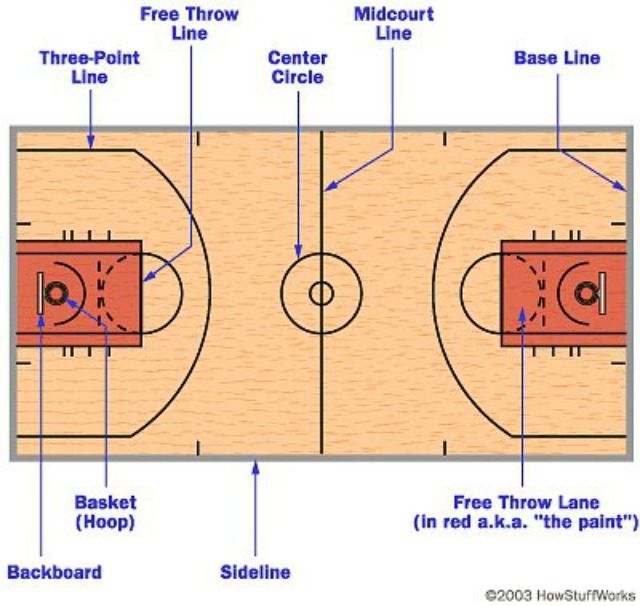 It is not allowed to replace a disqualified player.
It is not allowed to replace a disqualified player.
- Punching the ball is a violation of points 2 and 4, the penalty is described in point 5.
- commit no foul).
- A point is scored if a ball thrown or bouncing off the floor hits the basket and stays there. Defending players are not allowed to touch the ball or basket while shooting. If the ball touches the edge and the opponents move the basket, then a point is scored.
- If the ball goes out of bounds, it must be dropped into the field by the first player to touch it. In the event of a dispute, the referee must throw the ball into the field. The thrower is allowed to hold the ball for five seconds. If he holds it longer, then the ball is given to the opponent. If either side tries to play for time, the referee must give them a foul.
- The referee must monitor the actions of the players and fouls, and notify the referee of three consecutive fouls. He shall have the power to disqualify players under rule 5.

- The referee must watch the ball and determine when the ball is in play (inbounds) and when it goes out of bounds (out of bounds), which side should be in possession of the ball, and any other action that the referee would normally take .
- The game consists of two halves of 15 minutes each with a break of 5 minutes between them.
- The side with the most goals during this time period is the winner.
The most important rule change in the history of basketball is the introduction of dribbling. In the original version of the game, this was prohibited by paragraph 3 of the rules.
One of the first changes in the game and the rules was the replacement of the basket with a ring with a net. It seemed to be very inconvenient to climb after the ball every time after a hit. Around the same time, free throws, dribbling appeared, and the composition of the teams was fixed for 5 players on the court at the same time.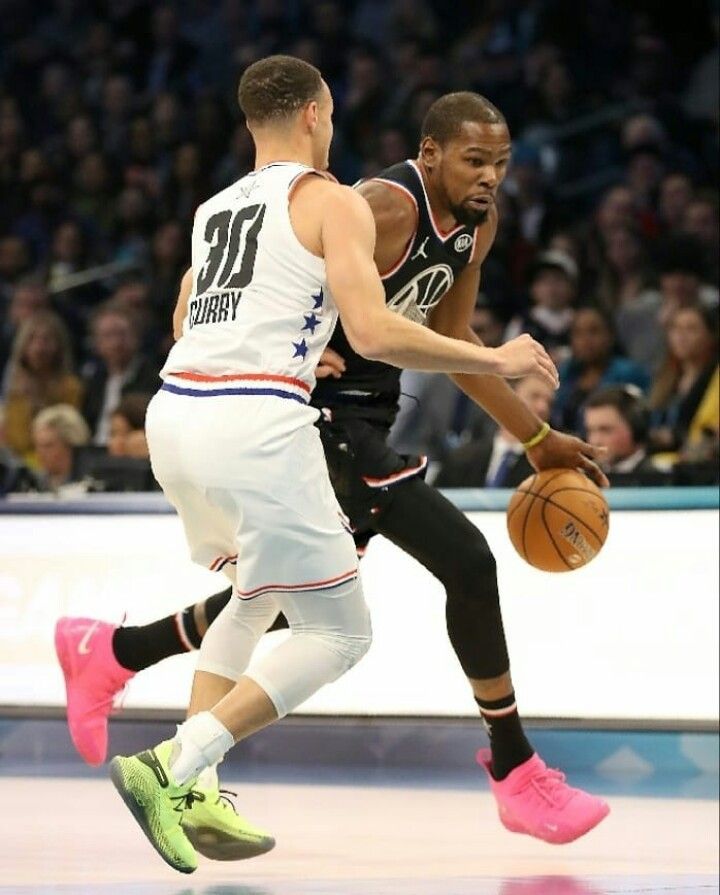 Before that, in some matches, up to 50 people could be on the court at the same time. All this happened back in 1896-1897.
Before that, in some matches, up to 50 people could be on the court at the same time. All this happened back in 1896-1897.
The emergence of FIBA (International Basketball Federation)
Basketball in the early 20th century became more popular and the rules in each country could be different. This was one of the reasons why FIBA appeared in 1932 year. At the first FIBA Congress, the teams were approved (5 people and 2 substitutes), and it was decided that after each goal there would be a throw-in in the center. This rule was removed after 4 years to reduce the advantage of tall players.
Over the next few years, the main changes were related to the number of personal fouls, the number of players on the bench and the introduction of a time limit for getting the ball into the opponent's half of the court.
More changes came in 1952 after the Olympics. The game became very boring, because the teams held the ball, having received a minimal lead in the score.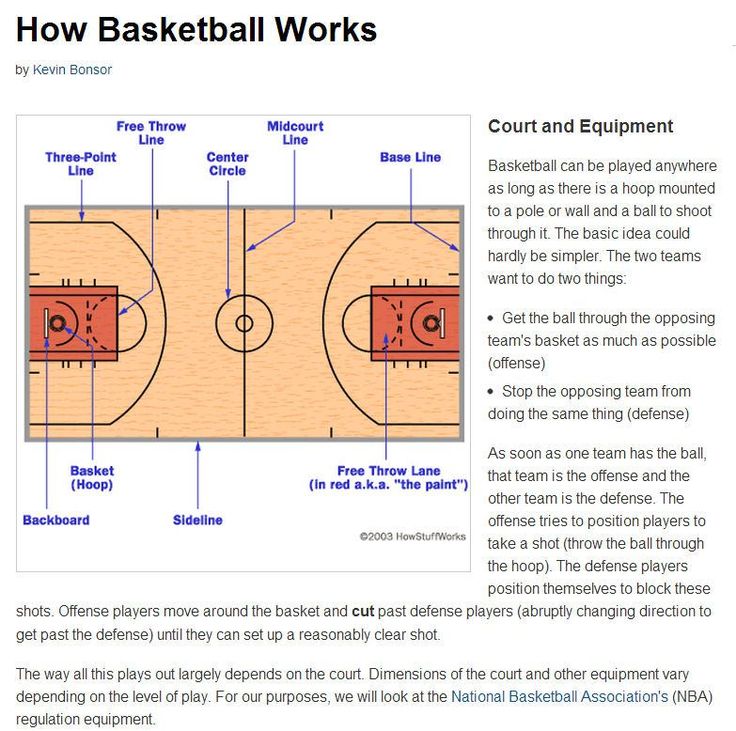 Everyone understood this and searched for solutions for several years in order to save the life of basketball. At 1954 Danny Biason proposed to the NBA to limit the time for the shot to 24 seconds. At the 1956 Olympics, there was a similar rule: it was necessary to make a throw in 30 seconds. At the same time, to add equality between defense and attack, another rule familiar to us appeared: you need to start dribbling the ball before the supporting leg comes off.
Everyone understood this and searched for solutions for several years in order to save the life of basketball. At 1954 Danny Biason proposed to the NBA to limit the time for the shot to 24 seconds. At the 1956 Olympics, there was a similar rule: it was necessary to make a throw in 30 seconds. At the same time, to add equality between defense and attack, another rule familiar to us appeared: you need to start dribbling the ball before the supporting leg comes off.
Then the game became similar to the modern one from a technical point of view: dribbling, shots, a three-second zone appeared. In 1979, the NBA added a three-point line, and in 19In 1984, FIBA also added an arc.
!!! An article about the evolution of the three-point shot and interesting facts:
10 interesting facts about the three-point shot.
10 interesting facts about the three-point shot.
Three-pointer evolution and insane records.
Changes in the rules and basketball since 1956 have included the number of free kicks, the situations in which these free kicks are given, and individual and team penalties. Some rules were introduced, and a few years later they were canceled. For example, the "3 for 2" rule: if a player was fouled in the shooting phase, then if one of the first two shots was missed, he could make another free throw. This rule was later removed.
Some rules were introduced, and a few years later they were canceled. For example, the "3 for 2" rule: if a player was fouled in the shooting phase, then if one of the first two shots was missed, he could make another free throw. This rule was later removed.
Since the 1990s there have been constant changes: the emergence of alley-oops, changes in the timing and rewriting of the rules of running, which continue to this day.
From the most interesting: if the team has 0.3 seconds or less to throw the ball from behind, then it must be a one-touch throw. It takes at least 0.4 seconds to perform a full throw.
Derrick Fisher made similar throws:
And here is a small selection of videos of how they throw in 0.2 seconds:
Do you want to take your first steps in basketball or improve your basic skills? We have a Basic Basketball Skills workout for you. See the schedule and sign up:
SIGN UP
Coach: Yuriy Bespalov
- Professional player of the INANOMO 3x3 team;
- Champion of Russia 3x3 2019, 2021;
- Winner and medalist of the MOFB championship;
- MLBL Summer League MVP 2017;
- Multiple participant of Moscow Open;
- Champion of Moscow 3x3 2017;
- MVP GrunisCup 2017.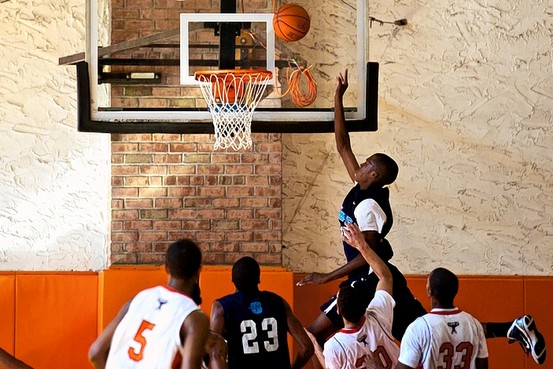
IF YOU LIKE THIS ARTICLE, DON'T FORGET TO SHARE IT WITH YOUR FRIENDS.
MORE ARTICLES FROM
BLOG
We write useful articles about basketball training, basketball shoes and everything related to this beautiful game.
Basketball in Moscow in winter
Free throw in basketball: technique and secrets of execution
Passes in basketball: basic types and technique of execution
Basketball terms everyone should know
How to increase the jump? 5 Tips
9 Definitions Every Basketball Player Should Know
#THIS YOUR GROUND
Social Media:
Slamdunk Journal :: Basketball Moves
Our phone number is 8-800-500-62-63.
What techniques exist and how they differ
Let's first deal with the definition: playing techniques are skills that a professional player must possess. Sounds simple, but what exactly are the skills in basketball? What should an amateur who wants to improve the performance of his game pay attention to? Let's figure it out.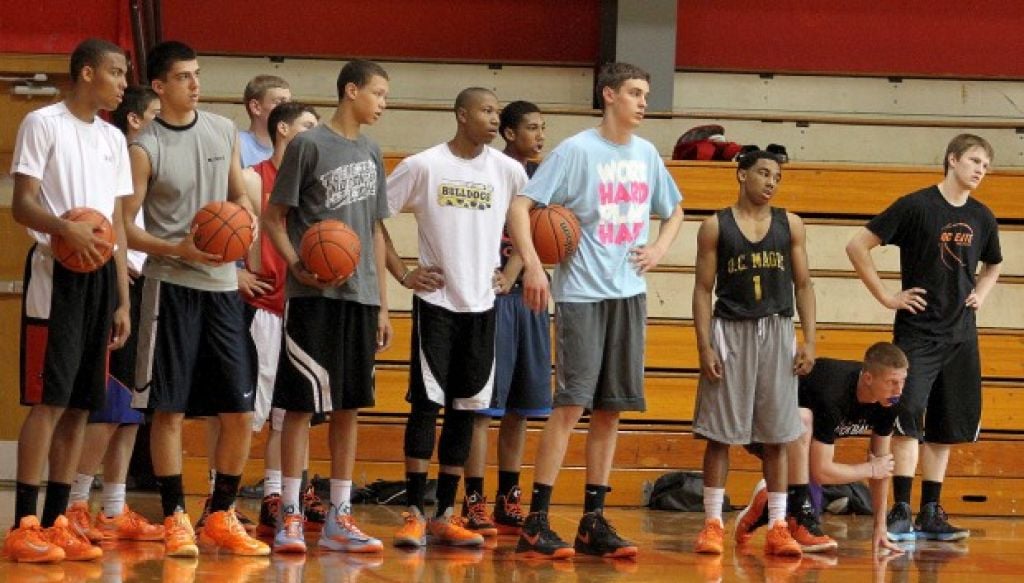
The main goal in basketball is to successfully hit the ball into the basket, and everything that happens on the court only leads the players to this moment. There are skills that basketball players work out in training to bypass rivals and make a successful shot.
Before we list them, let us remind you that basketball is a team sport, and even the most successful players do not master all the tricks perfectly. With a serious approach to training, you should decide on your position on the site and especially carefully work out the necessary techniques.
So the post must deftly pick up the ball under the basket and throw it right into the basket. Back row players are highly regarded for their ability to pass and make accurate shots from medium to long distances. And for an attacking basketball player, it is extremely important to be able to make lightning-fast breakthroughs to the ring. All these techniques and skills are practiced in training.
What are the basic skills?
- Holding the throw.
 Performed with two hands. Widely spaced fingers hold the ball from both sides. One of the basic skills for any player.
Performed with two hands. Widely spaced fingers hold the ball from both sides. One of the basic skills for any player. - Catching the ball. Another basic skill that no basketball player can do without. But are you sure you know how to do it right?!
The easiest way to catch the ball is at chin level. To do this, you need to take a small step forward and stretch your arms towards the ball with widely spread fingers - a “funnel”. In this case, the thumbs should be directed towards each other and brought together up to 3-5 centimeters. This will save you from slipping and hitting the ball in the face if you catch it at high speed. At the moment the ball touches the fingers, you need to make a shock-absorbing movement and transfer it to the chest. When catching the ball above the head, the actions are similar, but you need to extinguish the speed of its flight from the top-front, and then transfer it to the chest in an arc.
One of the most difficult tricks is catching the ball flying behind. Such a pass is often used to quickly break through to the opponent's ring. For him, without slowing down, make a slight turn of the shoulder and head towards the ball, and then catch it with the far hand and move it to the chest with a raking movement.
Such a pass is often used to quickly break through to the opponent's ring. For him, without slowing down, make a slight turn of the shoulder and head towards the ball, and then catch it with the far hand and move it to the chest with a raking movement.
Basic passing techniques:
There are several technically correct ways to pass the ball. One of the most basic is a transfer with two hands from the chest. In this position, the ball is most protected from the attacks of opponents, and besides, the transfer from the chest is the most accurate and reliable, regardless of whether it is carried out on the spot or while the player is moving.
- Two-handed transmission from below is more often used after stops and turns. During the swing, the ball is taken to the thigh, after which it is sent to another player with a sharp movement of both hands. Such a transfer is effective for beating especially tall opponents.
- One-handed passes are less accurate and more often used when speed is important.
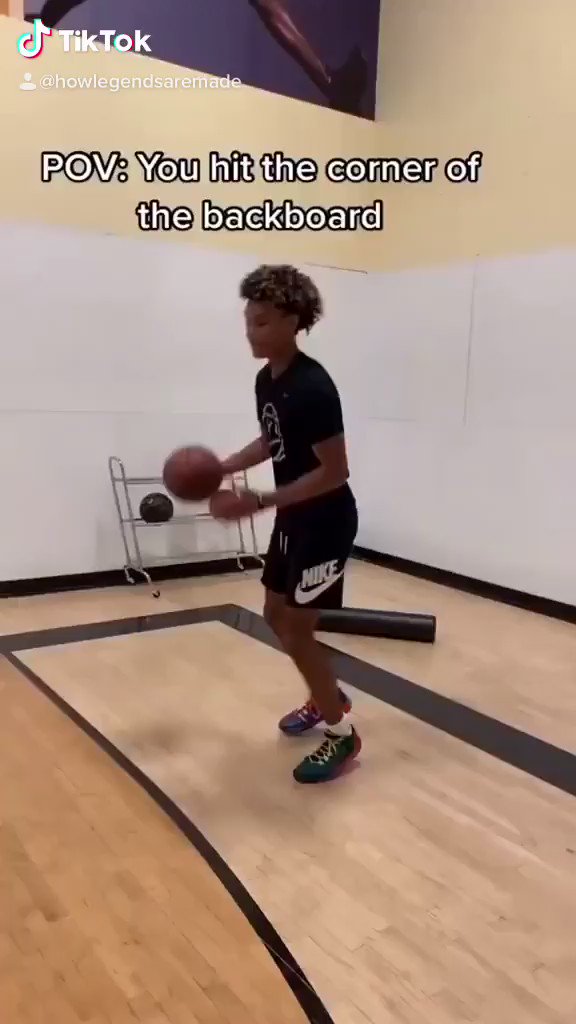 Their development should be given special attention in training in order to achieve maximum strength and accuracy.
Their development should be given special attention in training in order to achieve maximum strength and accuracy. - The shoulder pass is used when the ball needs to be passed as far and as fast as possible, and the hook pass, performed in an arcing motion, is good for passing the opponent.
- To get around a nimble and agile opponent, a rebound pass will also be good. It can be done with one or two hands. In this case, the push of the ball must be strong, and the rebound point must be closer to the receiving player.
What about dribbling?
Dribbling is the most basic thing in basketball. What makes this sport different from the rest. Simply put, dribbling is dribbling. It allows the player in possession of the ball, without violating strict basketball rules, to enter a position convenient for attacking, approach the ring and score the ball. The dribbling is carried out by elastic pushes of the ball with the fingers. It is dribbling that should be given special attention in training beginners.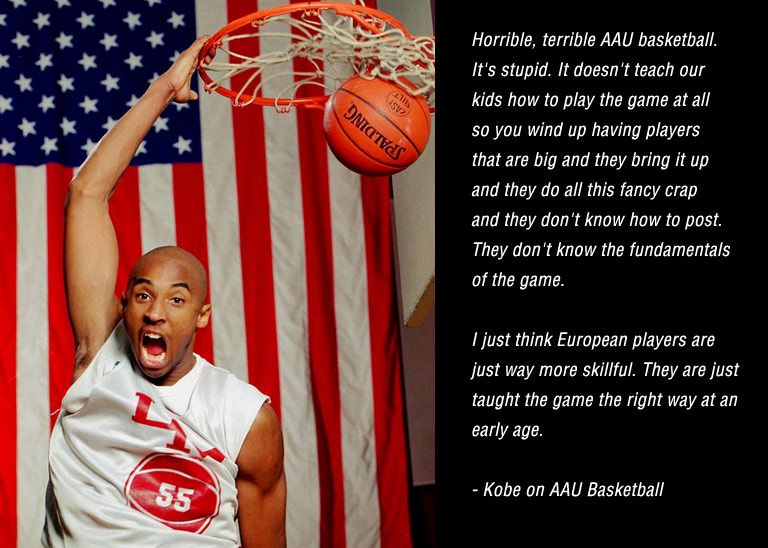
Well-developed dribbling technique will teach you not only how to move on the court, but also skillfully take the ball away from your opponents, which will bring you closer to the coveted ring.
But we already wrote about how to properly throw the ball into the ring in our other article;)
Slamdunk.su
Other articles
How to throw the ball correctly in basketball
And what types of throws exist
We look and understand
Why 'The Last Dance' is one of the best shows of the year
Knee exercises
How to strengthen get rid of pain.